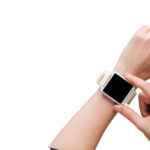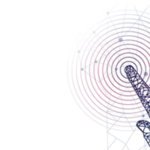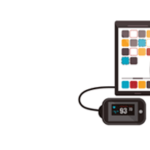Overview
New advancements in connectivity, artificial intelligence, and image storage and processing have led to the development of new tools for healthcare providers, including software as a medical device (SaMD). Though the promise of this technology is vast, with seemingly unlimited potential to detect and combat disease, as with most technologies, compliance with regulatory bodies is paramount to ensure patient safety and protect sensitive data.
What is SaMD?
The technological advances of the past decade have launched the world into a “Fourth Industrial Revolution,” epitomized by the proliferation of interconnected devices that can communicate with one another across the globe and interface with humans in new and exciting ways [1]. Among these advancements is the rise of specialized healthcare software that may involve the “diagnosis, prevention, monitoring, treatment, or alleviation of disease” [2]. When the software is “intended to be used for one or more medical purposes that perform these purposes without being part of a hardware medical device,” it is classified as SaMD [3]. Although a medical device is technically any item that impacts healthcare, from a tongue depressor to an MRI, there is a clear delineation between what is and is not SaMD. For example, software that operates a pacemaker or controls an infusion pump would not be considered SaMD, nor would systems that provide the foundation for maintenance, storage, updating, and accessing electronic medical records [4].
Why is SaMD important in healthcare?
The goal of any healthcare technology should be to create positive outcomes for patients and advance public health initiatives. To this end, SaMD can effect change in numerous ways, such as identifying and flagging trends across vast swaths of electronic medical records to identify potential health risks [5]. It can also take advantage of the ease with which digital systems can synthesize massive troves of data to uncover patterns and make predictions. For example, the confluence of wearable medical devices, the internet (for connectivity and secure cloud storage), and artificial intelligence provides an opportunity for SaMD to analyze, interpret, and learn from a wealth of real-time data in ways that would be impossible for a single human physician. The result of these advancements is the creation of SaMD that can collect and store information from a host of factors related to disease onset, progression, and treatment, including [6]:
- Genetic and epigenetic factors
- Demographic variables
- Environmental and contextual factors
- Lifestyle patterns
SaMD that utilizes artificial intelligence and/or machine learning algorithms can be used to enhance diagnostic accuracy and provide earlier disease detection than is currently possible. For example, SaMD is currently being evaluated for efficacy in detecting diabetic retinopathy (DR) [7]. It has also been used to identify various skin cancers, with studies showing that some SaMD performs comparable to, if not better, than trained clinicians and dermatologists [8].
The Regulatory Context for SaMD
Though SaMD holds great promise, it is incumbent upon government regulators to establish the necessary policies and procedures to balance innovation with patient safety. For example, in the United States, the Food and Drug Administration (FDA) evaluates risks and outcomes before granting approval for a device. Before SaMD may be used within the European Union (EU), it must receive a CE (“conformité européenne”) conformance mark. Within the People’s Republic of China, SaMD must first undergo technical review by the Chinese Center for the Evaluation of Medical Devices (CMDE), with final approval granted by the National Medical Products Administration (NMPA) [9]. In order to “harmonize the regulatory requirements for medical products that vary from country to country” [10], the International Medical Device Regulators Forum (IMDRF), which counts the U.S., EU, and China among its members, has produced a number of key documents, for topics ranging from clinical evaluation and risk categorization to how to apply a quality management system [11]. Thus, though approval must be obtained within specific countries, the IMRDF ensures that the regulatory guidelines that SaMD developers must meet have some degree of uniformity.
Challenges and Opportunities for SaMD Deployment
In addition to navigating legal channels and complying with the regulations, there are other challenges associated with deploying SaMD. Because most SaMD harnesses the power of connectivity (in other words, via the internet), there is a need for a standardized infrastructure and interoperability that allows information to flow freely between systems from different manufacturers, between medical disciplines, and across borders of nation-states [12]. However, such connectivity and storage of medical data carries inherent risk, which must be accounted for with enhanced security and encryption protocols, contingency plans for backup, and protocols for worst-case scenarios, such as denial of service attacks or cyberattacks [13].
Summary
The Fourth Industrial Revolution’s focus on developing cyber-physical systems has the potential to revolutionize healthcare. Better patient outcomes, achieved through medical personalization and diagnostic advances, could positively impact the lives and longevity of millions of people, provided the technologies are developed with a consideration of potential risks and comply with an aligned set of regulations being put into place across the globe.
References
1. Schwab, Klaus. 2016. “The Fourth Industrial Revolution: what it means, how to respond.” World Economic Forum, January 14.
2. Carroll, Noel, and Ita Richardson. 2016. “Software-as-a-Medical Device: demystifying Connected Health regulations.” Journal of Systems and Information Technology 18(2):186-215.
3. U.S. Food and Drug Administration (FDA). 2018. “Software as a Medical Device (SaMD).” Accessed January 21, 2025.
4. Deloitte. n.d. “Software as a medical device.” Accessed January 21, 2025.
5. Ajegbile, Mojeed Dayo, Janet Aderonke Olaboye, Chukwudi Cosmos Maha, and Geneva Tamunobarafiri Igwama. “Integrating business analytics in healthcare: Enhancing patient outcomes through data-driven decision making.” World Journal of Biology Pharmacy and Health Sciences 19 (01): 243-50.
6. Li, Yu-Hao, Yu-Lin Li, Mu-Yang Wei, and Guang-Yu Li. 2024. “Innovation and challenges of artificial intelligence technology in personalized healthcare.” Scientific Reports 14(1):18994.
7. Aamir, Ali, Arham Iqbal, Fareeha Jawed, Faiza Ashfaque, Hafiza Hafsa, Zahra Anas, Malik Olatunde Oduoye, Abdul Basit, Shaheer Ahmed, Sameer Abdul Rauf, Mushkbar Khan, and Tehreem Mansoor. 2024. “Exploring the current and prospective role of artificial intelligence in disease diagnosis.” Annals of Medicine and Surgery 86(2):943-9.
8. Salinas, Maria Paz, Javiera Sepúlveda, Leonel Hidalgo, Dominga Peirano, Macarena Morel, Pablo Uribe, Veronica Rotemberg, Juan Briones, Domingo Mery, and Cristian Navarrete-Dechent. 2024. “A systematic review and meta-analysis of artificial intelligence versus clinicians for skin cancer diagnosis.” NPJ Digital Medicine 7(1):125.
9. Awad, Susan, Lina Aljuburi, Rebecca S. Lumsden, Marya Mpandzou, and Roelie Marinus. 2023. “Connected health in US, EU, and China: opportunities to accelerate regulation of connected health technologies to optimize their role in medicines development.” Frontiers in Medicine 10: 1248912.
10. U.S. Food and Drug Administration (FDA). 2024. “International Medical Device Regulators Forum (IMDRF).” Accessed January 21, 2025.
11. International Medical Device Regulators Forum (IMDRF). 2024. “IMDRF documents.” Accessed January 21, 2025.
12. Aerts, Ann, and Doreen Bogdan-Martin. 2021. “Leveraging data and AI to deliver on the promise of digital health.” International Journal of Medical Informatics 150:104456.
13. Navaz, Alramzana Nujum, Mohamed Adel Serhani, Hadeel T. El Kassabi, Nabeel Al-Qirim, and Heba Ismail. 2021. “Trends, Technologies, and Key Challenges in Smart and Connected Healthcare.” IEEE Access 9:74044-67.







